It’s safe to say that technology has been an essential part of our work lives for many years, and this consensus has only been reinforced with the COVID-19 pandemic. Even so, many still struggle with the selection and implementation of a new software solution and, since technology now has more options than the color wheel, finding your way through the maze can be challenging.
There’s always the option to launch a full request for information (RFI) or request for proposals (RFP) process, but the infrastructure to support such processes is not always available. Even without an RFI or an RFP, there is still plenty to put in place to ensure that your efforts and money are not wasted on a software everyone will try to get around six months down the road.
Before diving into the subject, this article does not cover what would be required to prepare a business case to request a new software solution and presumes that your team has the green light for this project. However, questions broached here can be useful in many ways!
WHERE TO BEGIN
Before scrolling through pages and pages of Google search results, reviewing Gartner reports and attending lunch demos, it’s important to establish a clear scope1:
- What existing problem(s) are you trying to fix?
- What is each problem’s consequence (cost, efficiency, compliance, etc.)?
- What is each consequence’s impact (magnitude, frequency, etc.)?
- Are any of the problems linked?
- Are there any time or budget constraints?
- Which problem(s) should be prioritized based on time and budget constraints?
Though your own experience is helpful to have a first answer to the questions above, it can be a great team exercise using methods such as design thinking, which can be used as a collaborative approach to find and solve problems as a group.
These initial questions can easily be dissected. For example, when exploring existing problems, you can address it by process: What process is problematic? Is it the process as a whole or only part of it? Would you need help to support your process, enhance your process or replace it? Who is typically part of this process within your team, your company, or your external stakeholders? Are there any key performance indicators (KPI) that your team or management could use to track this process?
You’ll probably be looking for software in these general categories: e-billing, matter management, contract management, document management or e-discovery. The beauty of software’s diversity is the availability of a plethora of specialized software, such as intellectual property or real estate management, that can be used either to supplement or in the place of more general software.
Next, you should assign a sponsor from executive management to your project. A project owner should also be designated as the main driver during the process, coordinating the project from start to finish and being accountable for milestones.
WHAT YOU WANT FROM A SOFTWARE SOLUTION
Once you’ve identified the common thread to the problem(s) your team has decided to fix, you can focus on your team’s needs for the software solution itself. Before diving in the technology aspect and all its requirements, focus on these questions:
- Do you have an overall legal technology plan? If so, where would this software solution fit within the plan?
- What are the broad functionalities linked to the prioritized problems? Are any of these functionalities mandatory?
- Who will be the software users, both internally and externally, and what access should each type of user have?
- What type of data would be either uploaded by users or need to be generated by the software?
- What resources can you devote to train users, to the implementation phase and to subsequent vendor management?
- What is your team’s comfort level with technology innovation?
Here, again, the questions can be pushed further!
For data, you will need to address privacy and security concerns: what is the sensitivity of each type of data uploaded or generated, and are there any specific safeguards that would be necessary? Is there any applicable legislation that would add specific constraints to your selection process in this regard?
For innovation, you can ask: What is your place in the customer adoption curve? Are you part of the early adopters, or prefer to be the late majority? At what pace do you want to follow the legal tech industry’s innovations; as such, how much will you want the software solution to evolve short to mid-term?
Evidently, technology is everywhere and in everything. Therefore, and because technology will not be installed nor used in a vacuum, it’s important to see any new software solution as part of a whole. If possible, reach out to the technical support team to understand:
- What are our current systems?
- What would be the interactions between the current systems and this new software solution?
- Based on the type of data impacted and the current systems, is it preferable to deploy the new software solution on premise or can it be a SaaS solution?
- How seamless should access and use of the new software solution be for users? What are the company’s current security constraints and protocols?
- Will any data need to be migrated from a legacy system and, if so, what are the constraints?
At first glance, some companies will deem it preferable to “tweak” their use of an existing software or develop the software internally, but it’s not always the most time-efficient nor cost-efficient solution. If you have this possibility, ask the teams in charge:
- How long will it take to develop?
- Does the company have the necessary staff to provide quality user support, both in terms of training and maintenance?
- Will the company be able to ensure the regular upgrade of this custom software?
- What is the cost associated to labour needed to develop, support and upgrade this custom software?
TALKING TO VENDORS
Now, it’s time to put pen to paper! To streamline the selection process, it can be useful to present the scope in two ways. First, have a few lines providing a quick portrait of your organization, your team, the main problems you want to address and your current systems. Think of this as the “fifteen-second elevator pitch” that helps you navigate potential vendors and confirm you’re knocking on the right doors before discussing further.
Second, have a lengthier document detailing the main problems, the sought-after functionalities, the user access types, any specific security concerns and technical requirements or limitations. This lengthier document can stand as a miniature RFP process to compare your potential vendors’ individual offerings.
CHANGE MANAGEMENT
Finally, as with any change, one does not simply avoid the perilous journey to Mount Doom (Mordor) that is change management. Though many take the path, few succeed brilliantly. But that journey is for another time!
- “What to Deploy Now: A Candid Discussion About the What, Where, When, and How of Deploying Existing Technologies in Your Legal Department” 2017 ACC Annual Meeting. Panelists: Stephanie Lambert, Ravi Kiran Mamidanna, Ann Marie McLaughlin and Albert Oaten














